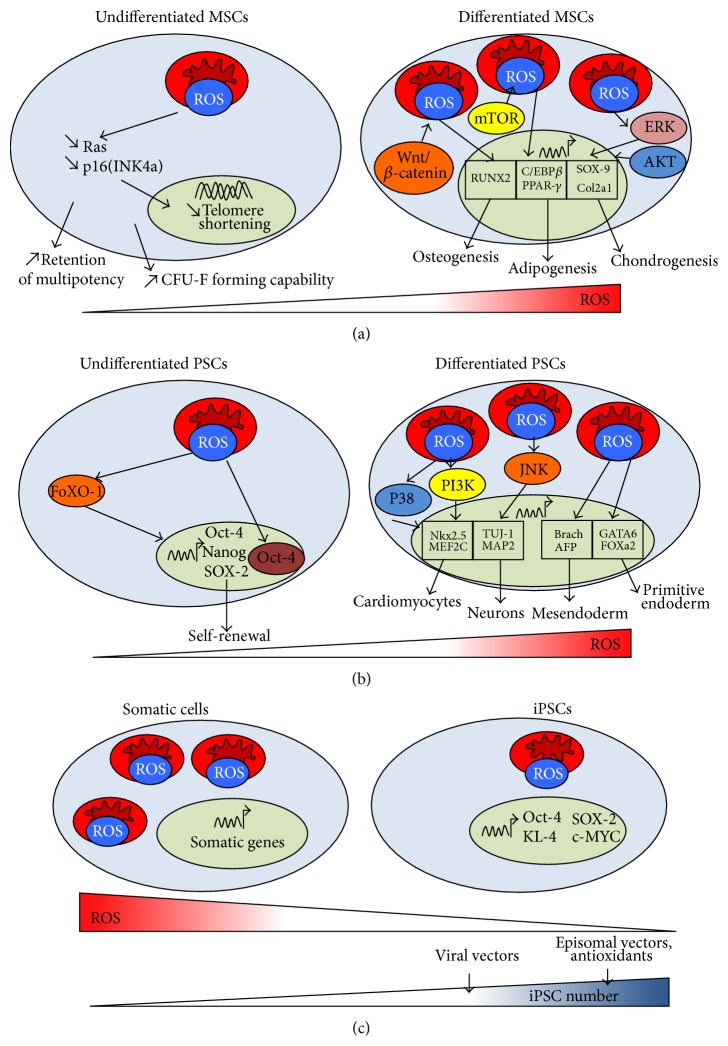Figure 3.
Regulation of stem cell self-renewal, differentiation, and reprogramming by ROS. (a) MSCs. MSCs have low numbers of mitochondria that generate low levels of ROS at undifferentiated state. Low ROS generation sustains the capability of forming colony-forming unit-fibroblasts (CFU-F). Upon differentiation, the number of mitochondria and the ROS levels are increased. ROS promotes the adipogenesis, osteogenesis, and chondrogenesis from MSCs. (b) PSCs. Undifferentiated PSCs have low mitochondrial biogenesis, which increases upon differentiation. Mild levels of ROS promote PSC self-renewal and the expression of Oct-4, NANOG, and SOX-2. Alternatively, the spontaneous and lineage-specific differentiations are associated with the increased ROS generation. For examples, ROS triggers PI3K and p38, which support cardiomyogenic differentiation. ROS also enhances neuronal differentiation through JNK activation. (c) iPSCs. During reprogramming, iPSCs show the decreased mitochondria biogenesis and a reduction of ROS production compared to the somatic cells. Increasing ROS scavenging during reprogramming enhances the efficiency of iPSC generation, which depends on the methods of OKSM (Oct-4, Klf-4, SOX-2, and c-MYC) transfection.

